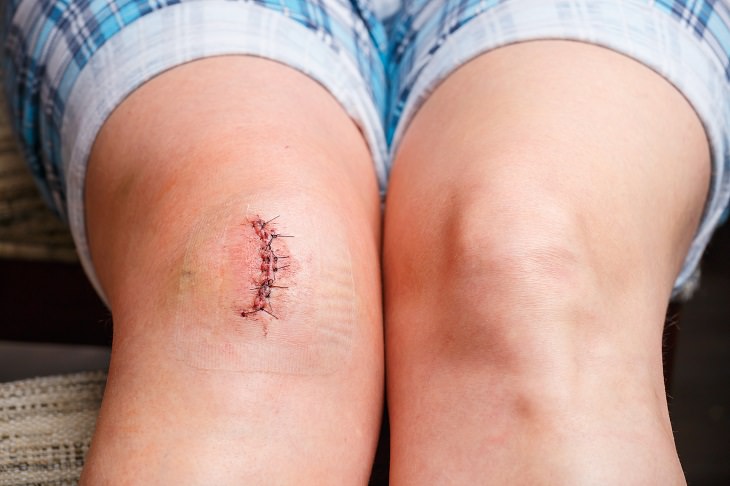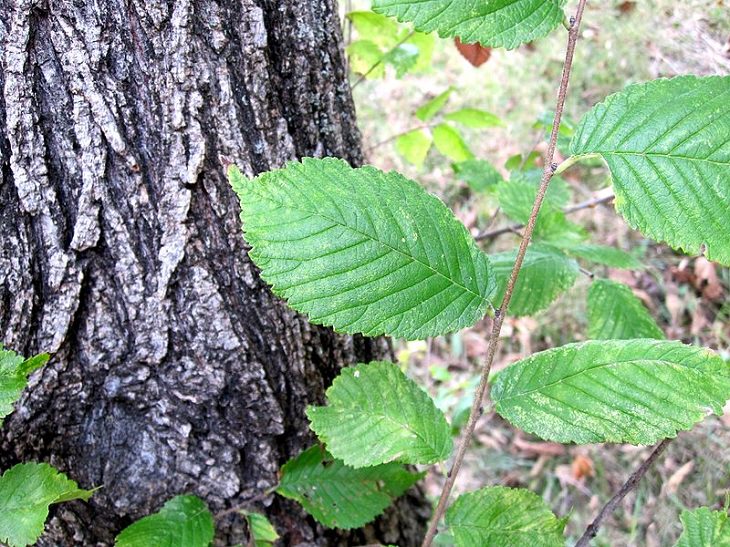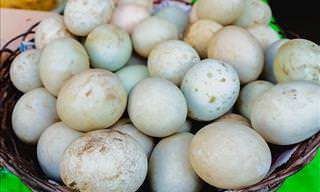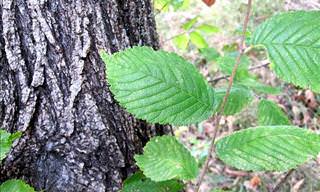As it's a demulcent, slippery elm helps soothe the lining of your stomach and intestines. This, in turn, reduces stomach irritation, one of the common symptoms of inflammatory bowel diseases such as Crohn's disease, ulcerative colitis, and irritable bowel syndrome (IBS).
To ease the symptoms of inflammatory bowel syndrome:
1. Add a tablespoon of slippery elm powder to a glass of hot water.
2. Leave it to steep for 5 minutes.
3. Drink it at least one hour after taking other medication.
4. Drink 2-3 times a day, as required.
2. Soothes a Sore Throat
The mucilage in slippery elm can coat the throat and provide almost instant relief form a sore throat, whether it's because of a cold, cough, tonsillitis, or laryngitis. The gel soothes the sore throat by reducing inflammation.
In fact, slippery elm is a very common ingredient in throat lozenges.
To alleviate your sore throat:
1. Add 2 teaspoons of the inner bark of slippery elm to 2 cups of boiling water.
2. Cover, and leave to steep for 5-10 minutes, then strain it.
3. Drink this tea twice a day for a couple of days.
3. Fights Constipation
Slippery elm's high mucilage content makes it an effective remedy for constipation. When you consume slippery elm, it helps stimulate the nerve endings in your gastrointestinal tracts, which is why it is useful for constipation. Furthermore, due to its demulcent properties, it is also good for healing hemorrhoids.
To treat constipation:
1. Mix 1 teaspoon of slippery elm bark powder with 2 cups of boiling water.
2. Add a teaspoon of sugar and a pinch of cinnamon powder.
3. Drink 1 to 2 cups of this twice a day, as required.
4. Combats Heartburn and Gerd

Heartburn can be severely reduced with slippery elm. The mucilage present in the slippery elm coats the esophagus and reduces any irritation and inflammation that occurs when stomach acid flows up the esophagus. It is also effective at treating gastro-esophageal reflux disease (GERD).
To relieve heartburn or GERD:
1. Mix 1 to 2 tablespoons of slippery elm powder to a glass of water.
2. Drink it after a meal.
5. Relieves Asthma
Slippery elm is thought to be an antitussive, meaning it helps in treating respiratory ailments such as asthma or bronchitis. Its anti-inflammatory nature helps to thin the mucus that clogs the airways and it can help prevent that bronchial spasms which are associated with asthma attacks.
To make slippery elm tea for asthma:
1. Add 2 teaspoons of the inner bark of slippery elm to 2 cups of boiling water.
2. Cover and let it steep for 5 minutes.
3. Strain, and add 1 teaspoon of honey.
4. Drink this tea twice a day when suffering from asthma.
6. Cures Dermatitis
Slippery elm is a great remedy for dermatitis, an inflammatory skin condition that causes itching, swelling and inflammation. Due to its very high mucilage content, it helps to moisturize the skin and promote healing.
To treat dermatitis:
1. Wash and then grind two slippery elm leaves to a paste.
2. Apply it to the affected area.
3. Allow it to sit on the area until it completely dries, then wash it off.
4. Do this 2-3 times a day until you see an improvement.
7. Treat a Stomach Ulcer
Slippery elm can be used to treat stomach ulcers. Due to its mucilage content, it soothes and calms the inflammation and pain associated with stomach ulcers.
To treat a stomach ulcer:
1. Grind the inner bark into a fine powder.
2. Mix 1 teaspoon of this powder into 1 cup of warm water.
3. Drink this mixture, 3 to 4 times a day for 1 week.
8. Heals Wounds

Slippery elm can be used to heal wounds and boils as it has the ability to heal internal tissue. It is also effective for treating pulled muscles or other aches and pains.
To make a poultice using slippery elm:
1. Mix slippery elm powder in boiling water to make a paste.
2. Allow it to cool.
3. Apply it to the affected area.
4. Wash it off after a few hours.
Note: Don't leave this poultice on your skin for more than 24 hours as it shrinks and pulls the skin. Also, don't apply it to open wounds.
9. Reduce Irritation of Urinary Tract
The mucilage present in slippery elm can soothe the lining of the urinary tract. The can help reduce inflammation and other painful, irritating symptoms.
How to reduce urinary tract irritation:
- Drink slippery elm tree once or twice a day.
- Take a supplement (consult your doctor first).
10. Aids Weight Loss
Slippery elm aids digestion, and this is why it also helps weight loss. It binds to substances in the intestines that the body doesn't need and slows their absorption into the body. Furthermore, its diuretic properties help reduce fluid retention and shed water weight.
To facilitate weight loss:
1. Add 2 tablespoons of slippery elm bark powder to 2 cups of hot water.
2. Leave it to steep for 5 minutes.
3. Drink this tea 2-3 times a day.
Additional Tips
- Pregnant or breastfeeding women should not consume slippery elm as it contains compounds that can lead to a miscarriage.
- When taking supplements, read the product labels and consult your doctor beforehand.
- For safety measures, wait 1 hour after taking oral medication before taking slippery elm.
Source: top10homeremedies
Photos: depositphotos
 Go to BabaMail
Go to BabaMail
























































